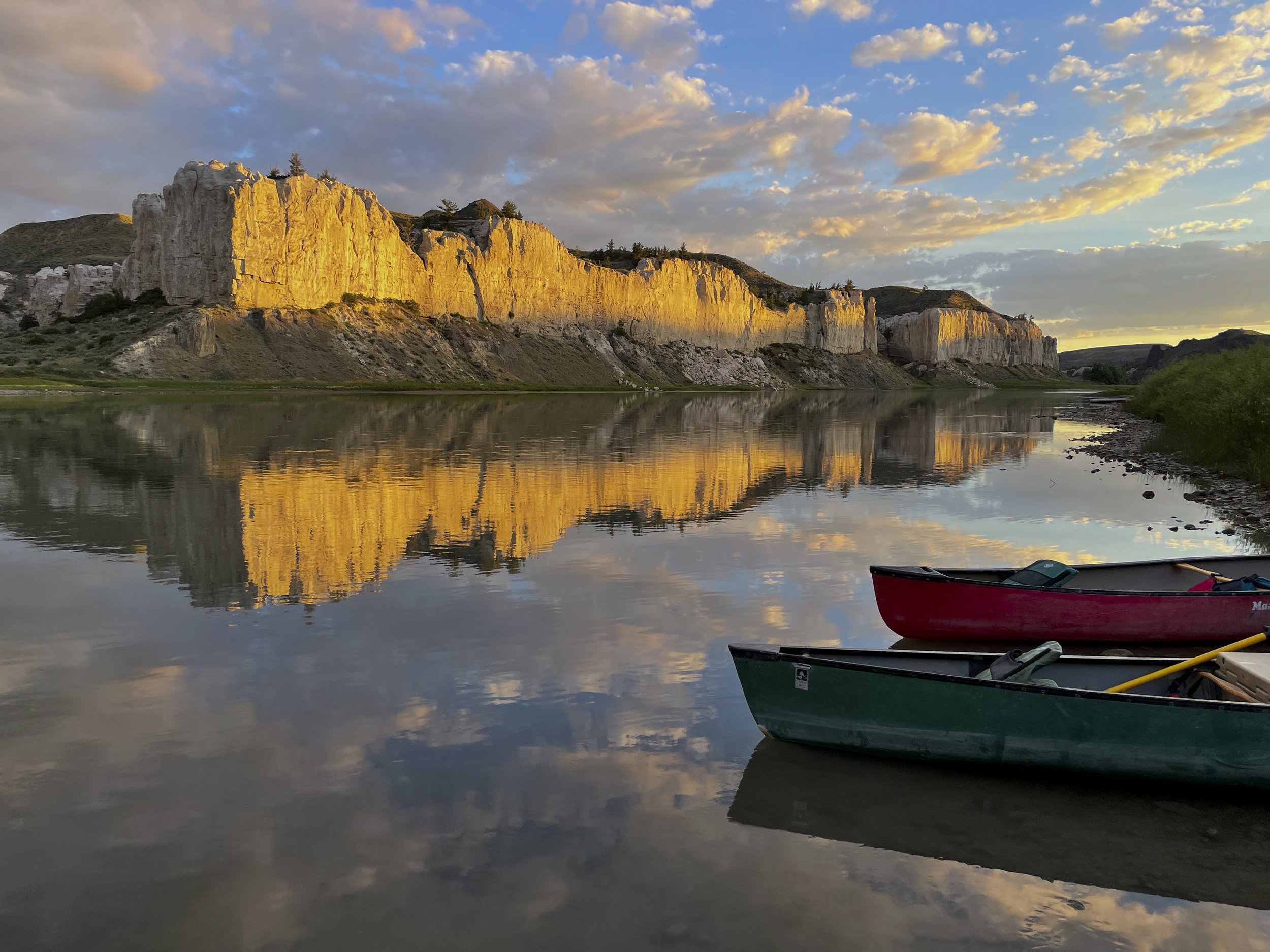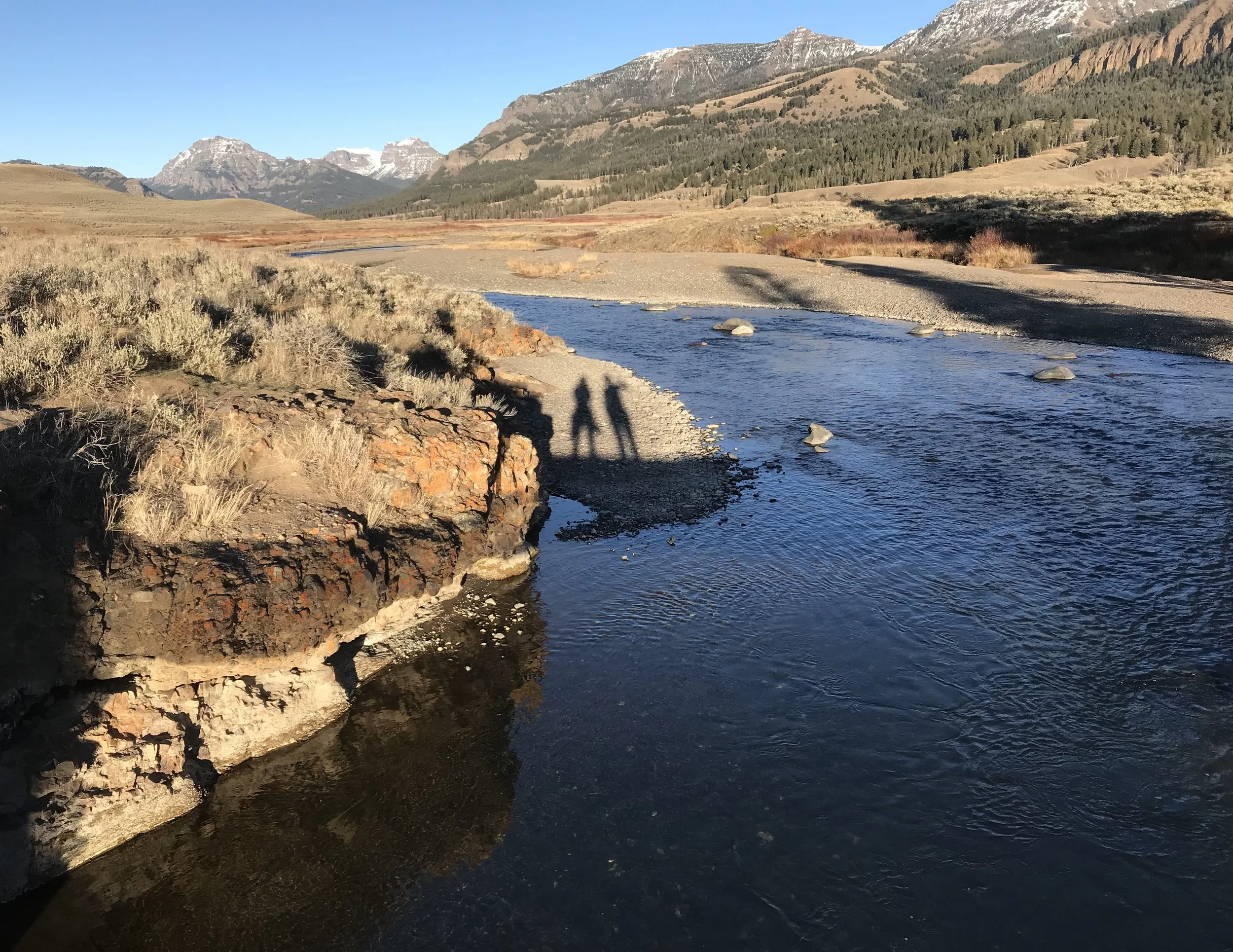
In Pursuit of Paddlefish
By Gabby Bunko
The Rich Rewards of a Lesser-Known Sport
Wrangling prehistoric fish on the Missouri River
As my feet slide forward on the trail’s soft sand, my eyes dart to the sharp drop off of the Missouri River 150 feet below. The sand is loose, and I keep slipping—there’s nothing to grab if I fall. I move towards my dad, and my brother Lucas, at the bottom of the trail on shaky legs. My mom follows suit while they scout ahead for a good fishing spot.
This year, we’re trying our hand at paddlefishing. My dad heard about it from a friend, and once we learned how big paddlefish can get, we had to put in for the drawing. Three out of the 4 of us drew tags to catch-and-keep. Unfortunately, my dad—the most excited to go—is only here to support us.
Montana Fish, Wildlife and Parks holds a yearly lottery for paddlefish tags: both for keeping, and snag-and-release. The number of tags vary by year, but three different tags determine if an angler can ultimately keep their fish: white, yellow, and blue. Each color designates a specific location where anglers can fish, as well as a season start-date. The three of us drew white tags, so our’s begins on May 1. Snag-and-release tags normally have a similar drawing process, but this year (2020), FWP shut it down due to COVID-19—reducing the potential number of anglers by at least 10,000. The only people out on the river today are those who drew “keep” tags, along with their friends or family, which means there’s just one other group near the spot my dad wants us to fish. After readying a massive, 6-foot pole, I cast… and snag—over and over: panting. Although I desperately hope to feel my hook hit a paddlefish, it’s very different from the fishing I’m used to.
“I desperately hope to feel my hook hit a paddlefish; it’s very different from the fishing I’m used to.”
The Montana Field Guide explains that paddlefish cannot be fished conventionally. They eat plankton by filtering water through their “gill-rakers,” so they will rarely bite at any bait placed on a hook. We’ll have to snag them instead, and it’s certainly hard work: after only a few days, I’ve already found lines of black and blue on my ribs from an unforgiving pole. Per FWP’s rules, the only help an angler can receive when catching a paddlefish is for someone to “gaff” or grab it, and no one is allowed to help with the actual reeling.
Our gaff is a large hook with a long wooden handle. It’s meant to hook into the fish once it’s close so the fisherman doesn’t lose their catch, but “gaffing” is only allowed if the fish is going to be kept. Some people don’t use a gaff at all because they don’t want to hurt the fish any more than they have to. Many don’t care for catch-and-release paddlefishing for the same reason—while hooks for paddlefishing are “pinched,” allowing the hook to slide out easily—the fish is still harmed in the process. Some question whether such a process can be ethical.
After painstaking hours of casting, we cross a bridge to the river’s opposite bank. As I walk, I ponder whether I would release a smaller paddlefish if I caught one. My dad says I should, but what if I don’t catch another? We try our luck by the bridge’s concrete supports, casting out from the shadow of metal and stone connecting the riverbanks. It’s apparent that a lot of people have already left: they must have tagged-out, which is normal when the water is up this high. According to the Montana Field Guide, this is the best time to fish.
Every year, paddlefish make an annual journey upriver to spawn, typically coinciding with spring’s high waters. The higher the water level, the more likely paddlefish are to move. This also means that female paddlefish are carrying eggs—a delicacy often considered one of the best and most expensive types of caviar in the world. However, such an elusive prize is illegal to sell. Although males are typically smaller, both sexes are known for exceptional white meat. That’s what we’re going for—a paddlefish can be between 60 and 160 pounds, and that’s a lot of meat in the freezer.
“I reach out and touch the fish: a species that has existed in Montana for 60 million years.”
- Gabby Bunko
Photo by Hannah Dreesbach
Finally, Lucas snags one.
My heart pounding, I arrive with the gaff just as my brother wrestles the fish into the shallows near the bank. I’m met with resistance as I bring the gaff down.
Close enough to examine the thrashing river monster, I can see that it’s easily over three-quarters of my height. (We later discovered that we had latched onto an impressive, 65-pound male.) With eyes wide open in awed reverence, I reach out and touch the fish: a species that has existed in Montana for 60 million years. Its scaleless body catches my fingers like rubber—there’s no slime normally associated with fish, and the paddle itself sticks out like a long, flat nose. I stare for a long time before finding its small eyes, the orbs are unnervingly inset.
Lucas quickly tags it.
The Montana Field Guide and FWP website states that their tagging system is important for the management of paddlefish populations. Because paddlefish often suffer from reproductive problems, they may not necessarily spawn at the rate that they’re caught. Therefore, FWP carefully calculates how many tags should be given out, based on the number of paddlefish in the Missouri River each year. If the population decreases, so does the number of tags, and only a thousand were handed out this year. Without a tagging system, the species might become endangered in Montana from overfishing. Additionally, money that FWP makes from their lottery drawings also helps pay game wardens, who manage this ancient species for future generations.
After field dressing the paddlefish, my mom and I fish for two more days with no luck. Small hills morph into mountains as we drive home from the flourishing, flowing landscape around the Missouri River. To one another, we express our gratitude for the meat our paddlefish brought us, the money it helped us save, and the time we were able to spend together.

